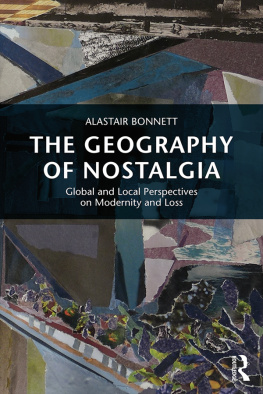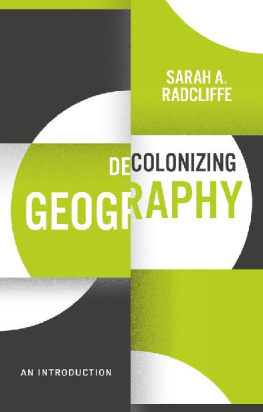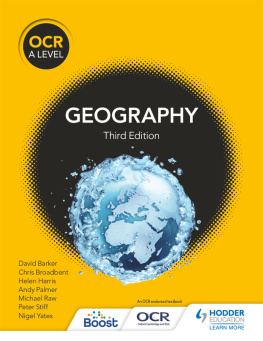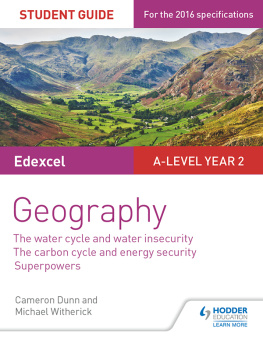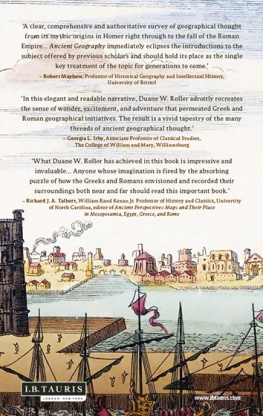ROUTLEDGE LIBRARY EDITIONS: POLITICAL GEOGRAPHY
Volume 9
THE GEOGRAPHY OF WARFARE
THE GEOGRAPHY OF WARFARE
PATRICK OSULLIVAN AND JESSE W. MILLER JR
First published in 1983
This edition first published in 2015
by Routledge
2 Park Square, Milton Park, Abingdon, Oxon, OX14 4RN
and by Routledge
711 Third Avenue, New York, NY 10017
Routledge is an imprint of the Taylor & Francis Group, an informa business
1983 Patrick OSullivan and Jesse W. Miller Jr
All rights reserved. No part of this book may be reprinted or reproduced or utilised in any form or by any electronic, mechanical, or other means, now known or hereafter invented, including photocopying and recording, or in any information storage or retrieval system, without permission in writing from the publishers.
Trademark notice: Product or corporate names may be trademarks or registered trademarks, and are used only for identification and explanation without intent to infringe.
British Library Cataloguing in Publication Data
A catalogue record for this book is available from the British Library
ISBN: 978-1-138-80830-0 (Set)
eISBN: 978-1-315-74725-5 (Set)
ISBN: 978-1-138-81057-0 (Volume 9)
eISBN: 978-1-315-74942-6 (Volume 9)
Publishers Note
The publisher has gone to great lengths to ensure the quality of this reprint but points out that some imperfections in the original copies may be apparent.
Disclaimer
The publisher has made every effort to trace copyright holders and would welcome correspondence from those they have been unable to trace.
The
GEOGRAPHY
OF WARFARE
PATRICK OSULLIVAN AND JESSE W. MILLER JR
1983 Patrick OSullivan and Jesse W. Miller Jr
Croom Helm Ltd, Provident House, Burrell Row, Beckenham, Kent BR3 1AT
British Library Cataloguing in Publication Data
OSullivan, Patrick
The geography of warfare.
1. Military art and scienceHistory
2. Naval art and scienceHistory
I. Title II. Miller, Jesse N.
355009 U27
ISBN 0-7099-1918-2
Printed and bound in Great Britain
by Billing and Sons Ltd, Worcester.
CONTENTS
Therefore to estimate the enemy situation and to calculate the distances and degree of difficulty of the terrain so as to control victory are virtues of the superior general Sun Tzu, (chapter 10, verse 17). |
Introduction
The justification for writing this book is that the fundamental strategic and tactical problems are geographical in nature. Field Marshal Montgomery once attributed victory in battle to transportation, administration and geography, with the accent on the latter. It is not our purpose to describe the geographical disposition of armed force or to record the applications of geography to the conduct of military affairs. This has been done admirably elsewhere. Our theme is the geography of preparing for and waging war. The decision whether to fight or not ought to be informed by a keen sense of geopolitical realities. Although the question of how to fight is governed by technological and economic capabilities, it is essentially a response to environmental possibilities and limitations. Once if and how to fight have been determined, the problems of war become much more specifically geographical and the principal matter for decision is where to commit forces to battle.
We can distinguish three activities involved in the prosecution of war. Firstly, information has to be gathered. Where are the objectives to be captured or defended? Where is the opposition likely to come from or be? Where are there obstacles and channels of movement? Secondly, the commitment of force can only be achieved within the domain of feasibility of logistics. The possibilities for action are limited by where supplies of men, material and firepower can be deployed. Thirdly, after intelligence and logistics have provided information on the geography of the problem and the logistically favourable ambit then decisions on action are a matter of where to commit what force? where to move and deploy? where to attack or defend, advance or retreat? where to place routes, bridges, landings and defences?
The relations between intelligence, logistics and action can be viewed in terms of geographically specific informational and logistic constraints on the freedom of action. These relations operate at a variety of geographical scales with what is feasible at a more local scope limiting freedom of choice at more global levels. We can distinguish four categories of scale related to kinds of decision and action:
(a) local concerned with operational, tactical decisions below the division level
(b) operational the manoeuvre and support of major field forces
(c) regional concerned with strategic deployment in a theatre of war, campaign considerations
(d) global matters of grand strategy, concerned with geopolitical goals and ploys and the design of worldwide strategic systems.
The Scope and Scale of Warfare
There is really no ready cut-off between the very local considerations of what troops can do on the ground with their weapons and the use of terrain and the broader prospect of the deployment of troops and weapons at the global scale. Tactical and strategic questions merge into each other. Tactics and strategy are usually defined in terms of each other, like boats and ships. Strategy merely implies a greater level of generality than tactics. Conventionally, strategy has been taken to imply generalship, the art of conducting a campaign and manoeuvering an army conceived at a fairly high level of geographical abstraction. The image is of broad arrows moving large units through a greatly simplified landscape. Above this we have grand strategy with a broader, if not worldwide, connotation. This implies the use not only of military but also economic, diplomatic and political means to achieve national ends. By contrast, tactics is the art of manoeuvring and coordinating the fires of land, sea or air forces in the presence of the enemy and implies a detailed scrutiny of local geography and specifying the deployment of small individual units.
Clearly, geographical factors come into play at all levels. Global strategies must be informed by geographic intelligence and the highest level decisions are fundamentally geopolitical in nature and can go awry from geographical misconception. If arms are to be employed in seeking a geopolitical goal, then the advantages of the strategic situation are clearly conditioned by what is feasible at the tactical level. The technology or mobility of the deployment of firepower and communications gives the advantage of the various theatres of war to aggression or defence. The balance of vulnerability and penetrating force can be changed by changes in weapons, mobility, communications or, indeed, terrain. Obviously changes in the balance of aggressive or defensive advantage may change the balance of military power and, thus, the terms of grand strategy and global dominance. It is evident that these scales and levels of decision blend into one another. Nevertheless, there are distinctly different problems at the different geographical scales and there is an hierarchical nesting of their relevance. Campaign strategy is governed by the grand strategic design and in its turn prescribes operations and tactics. What can be done at the global scale is limited by what can be achieved in particular theatres of war, which depends upon the successful execution of tactics. With this in mind, it seems appropriate to build our discussion of the geography of warfare from the ground upwards with the local, operational and tactical as a basis for broader scopes of concern. To set the scene for the relationship of tactics to terrain we need to discuss matters of intelligence, logistics and the variety of tactical ploys. The core of the book then is a treatment of tactics and terrain in conventional warfare under a variety of environmental conditions. From this we step up to the strategic level of resolution and the management of war over a broad theatre. There is a need to concern ourselves with kinds of strategy, the informational needs and logistical considerations involved in a war rather than a battle. We distinguish this geographic scale as that of campaign strategy. It is at this scale that sea, air and nuclear warfare need particular attention.





